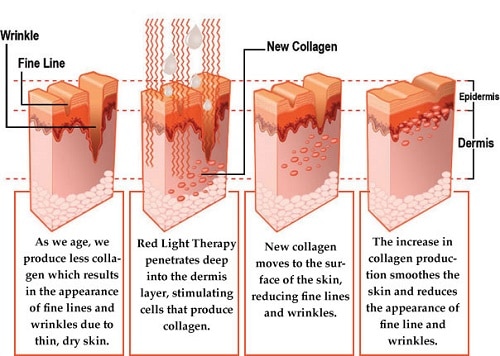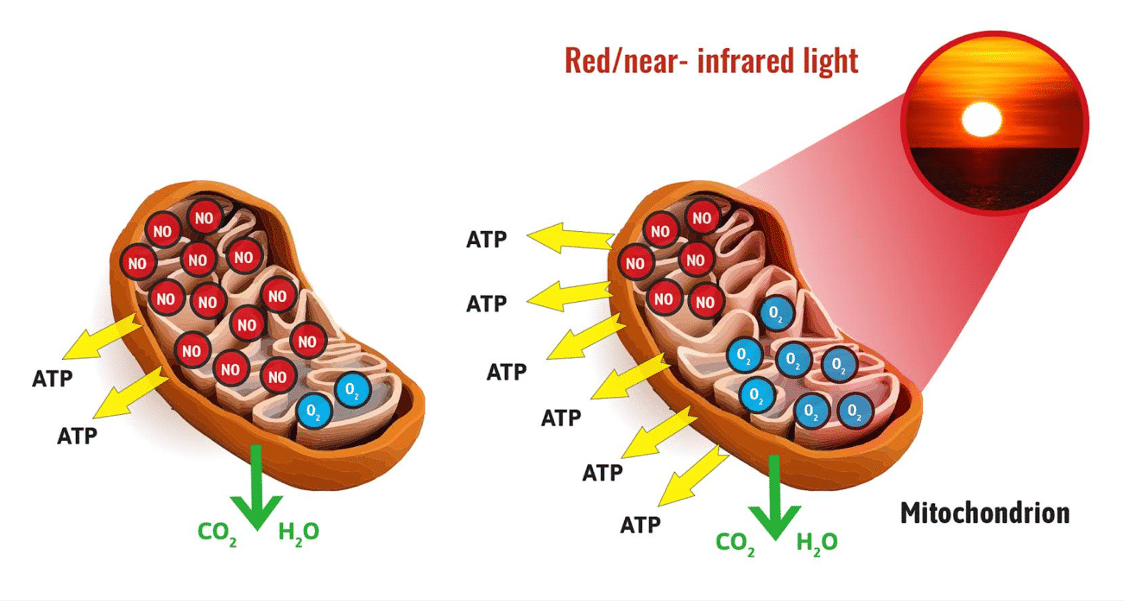Red light does increase collagen growth? vid
LED red light therapy stimulates fibroblasts to produce collagen while decreasing the enzymes that then break it down.
Fibroblasts are large, flat, elongated (spindle-shaped) cells possessing processes extending out from the ends of the cell body.
https://pubmed.ncbi.nlm.nih.gov/29665018/
Differential response of human dermal fibroblast subpopulations to visible and near-infrared light: Potential of photobiomodulation for addressing cutaneous conditions
At the cellular level, short visible wavelengths exerted a greater
inhibitory effect on reticular DF. Several genes involved in the TGF-β
signaling pathway were also affected. In addition, procollagen I
production was inhibited. By contrast, 850 nm near-infrared (NIR) light
(20 J/cm2 ) exerted a stimulatory metabolic effect in these cells, with no detectable intracellular ROS formation.
dermal fibroblasts (DF) were isolated from the surplus of post-surgery
human facial skin. An in-house developed LED-based device was used to
irradiate cell cultures using six discrete wavelengths (450, 490, 550,
590, 650, and 850 nm). inhibition of pro-collagen production and proliferation in response to blue light.
interesting.
https://www.sciencedirect.com/science/article/abs/pii/S1567724916302586
•
Near-infrared (NIR) light is a complementary therapy used to treat musculoskeletal injuries but the underlying mechanisms are unclear. Acute NIR light treatment (~800-950 nm; 22.8 J/cm(2)) induced a dose-dependent increase in mitochondrial signaling (AMPK, p38 MAPK) in differentiated muscle cells. Repeated NIR light exposure (4 days) appeared to elevate oxidative stress and increase the upstream mitochondrial regulatory proteins AMPK (3.1-fold), p38 (2.8-fold), PGC-1α (19.7%), Sirt1 (26.8%), and reduced RIP140 (23.2%), but downstream mitochondrial regulation/content (Tfam, NRF-1, Sirt3, cytochrome c, ETC subunits) was unaltered. Our data indicates that NIR light alters mitochondrial biogenesis signaling and may represent a mechanistic link to the clinical benefits.
Cytochrome c oxidase is part of the respiratory chain in our mitochondria that is responsible for producing ATP (cellular energy). When red and near-infrared light photons hit the photoacceptor cytochrome c oxidase, it helps the mitochondria use oxygen more efficiently to produce ATP.
https://www.karmikchannels.org/red-light-therapy/
red and near-infrared light essentially prevents this pairing of NO with cytochrome c oxidase. It knocks the NO out and lets the oxygen in!
In essence, photobiomodulation allows oxygen into the mitochondria (and prevents NO from halting energy production).[30]
In fact, mitochondria generate signals (based on the environment) that signal back to the nucleus which genes to switch on and off!
In particular, the transient increases in ROS (free radicals) from red/NIR light activates many of the same cell defense systems that exercise does. The transcription factor NF-kB is activated through exposure to free radicals generated by red and near-infrared light, which promotes a very low-level inflammatory response. This then engages a mechanism called the NRF2 pathway and the Antioxidant Response Element (A.R.E.) – our internal cellular antioxidant defense system – which helps put out the fire by eliminating the inflammation and free radicals. In short, in much the same way that exercise builds your muscles stronger by temporarily stressing them, light does the same thing to our internal anti-oxidant and anti-inflammatory defense system.
https://endalldisease.com/reverse-hearing-loss-and-tinnitus-red-light/
On scanning electron microscopic images, “LLLT significantly increased the number of hair cells in middle and basal turns. Hearing was significantly improved by laser irradiation. After LLLT treatment, both the hearing threshold and hair-cell count significantly improved.”
https://pubmed.ncbi.nlm.nih.gov/24343446/
On SEM images, LLLT significantly increased the number of hair cells in middle and basal turns. Hearing was significantly improved by laser irradiation.




No comments:
Post a Comment